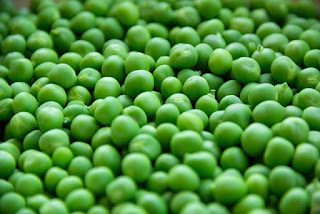Cabbage, a leafy green, red, or white biennial plant, is known for its dense-leaved heads and is a part of the Brassica family, which also includes broccoli, cauliflower, and kale.
Here are some interesting facts about cabbage:
Nutritional Value: Cabbage is low in calories but high in fiber and vitamins, including Vitamin C, K, and B6, along with minerals like potassium and manganese.
Varieties: There are over 400 different varieties of cabbage, including green, red, Savoy, and Napa cabbage, each with its own texture and flavor.
Historical Significance: Cabbage has been cultivated for thousands of years and was used by ancient Greeks and Romans. It was brought to Europe around 600 B.C. and has been a staple in many cultures' diets.
Health Benefits: Regular consumption of cabbage is linked to improved digestion and reduced inflammation. It's also known for its potential cancer-fighting properties due to its high antioxidant content.
Culinary Uses: Cabbage is versatile in the kitchen. It can be eaten raw in salads and slaws, fermented to make sauerkraut or kimchi, or cooked in soups, stews, and stir-fries.
Global Production: China is the largest producer of cabbage and related vegetables, followed by India and Russia.
Cabbage in Culture: Cabbage has been a symbol of luck and fortune in some cultures, particularly during celebrations like New Year's in some parts of the world.
Storage and Preservation: Cabbage can be stored in the refrigerator for weeks, and its shelf life can be extended through pickling or fermenting.
Fermentation: Fermenting cabbage to make sauerkraut or kimchi is not only a way to preserve it but also enhances its nutritional profile, particularly with probiotics that are beneficial for gut health.
In Gardening: Cabbage is a cool-weather crop, making it ideal for spring and fall gardens. It's also known to be a companion plant, helping deter pests when grown near other crops.
Certainly, cabbages have some unusual and lesser-known aspects to them.
Here are some interesting and unusual facts about cabbage:
Cabbage and Moon Gardening: In some traditional gardening practices, cabbage is often planted according to the phases of the moon, with the belief that planting during specific lunar phases can affect the growth and flavor of the cabbage.
Sound Absorption: Surprisingly, cabbage leaves have sound-absorbing properties. They have been used in some unconventional settings, like recording studios, as a makeshift soundproofing material.
Cabbage Juice as a Natural Indicator: The juice of red cabbage can act as a natural pH indicator, changing colors depending on the acidity or alkalinity of a substance. It's a popular experiment in basic chemistry classes.
Ancient Hangover Remedy: In Roman times, cabbage was used as a hangover cure. The Romans believed that eating cabbage would relieve headaches and the effects of heavy drinking.
Cabbage in Space: Cabbage has been grown in space! It's one of the few vegetables that have been successfully cultivated in the microgravity environment of the International Space Station.
World's Largest Cabbage: The world record for the heaviest cabbage was set in 2012, in Alaska. The cabbage weighed an astounding 138.25 pounds (62.71 kilograms).
The Cabbage White Butterfly: One of the most common butterflies in Europe and North America, the Cabbage White, is so named because its larvae feed on cabbages and other brassicas.
Cabbages and Witchcraft: In some parts of Europe during the Middle Ages, cabbages were associated with witchcraft. People believed that witches used cabbage in their potions and spells.
Cabbage as a Medicinal Plant in History: Historically, cabbage leaves were used as a treatment for various ailments, such as swelling and mastitis. The leaves were warmed and applied directly to the skin.
ORNAMENTAL CABBAGE
Unique Genetic Trait: Cabbage, along with broccoli, cauliflower, kale, and Brussels sprouts, are all derived from the same plant species (Brassica oleracea). They've been selectively bred over centuries to enhance different features of the same plant.































